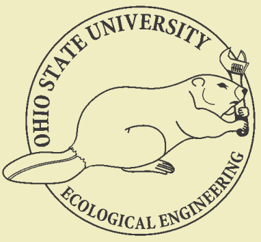Go Buckeyes!
- Keeper

- Apr 15, 2015
- 2 min read
One of the greatest challenges to renovating this lighthouse – which sat uninhabited for over 60 years – is the lack of working utilities. When keepers lived there from 1925 to 1948, they took water directly from the lake, dumped sewage back in, and used a coal burning furnace for heat. The building was never connected to city water and sewer and a cable under the harbor that provided electricity to run the beacon and lights was mysteriously cut and is no longer functioning. When I bought the property in 2011, it was considered entirely “off-the-grid” in terms of utilities.
Because it is now a summer residence, having a source of heat isn’t necessary, but certainly electricity to run lights and appliances and running water are. The entire electrical system has been completely rewired to code and power throughout the lighthouse is supplied by a gas generator. I love having functioning light switches, plugs to charge my phone and computer, and appliances such as a refrigerator, microwave and toaster oven to store food and cook meals.
Running water, on the other hand, has been elusive. Because the lighthouse is off-the-grid, rainwater must be captured, stored and treated onsite for use. Likewise, “used” water must be treated again before being disposed of in the lake. Fortunately, there are composting toilets installed for sewage.
To help me design the best off-the-grid water system appropriate for the lighthouse, I reached out to the Ohio State University Engineering Department to work with the student Ecological Engineering Society. The students were enthusiastic and more than happy to take on my project. We discussed various designs for water treatment and a disposal system. We met with the local county health officials -- who have jurisdiction over water treatment systems -- and the students presented their proposed plan. Unfortunately, their proposal included taking water directly from Lake Erie, which we then found out is not allowed. Furthermore, some of the treatment equipment they recommended was not yet approved for use in the State of Ohio. However, the students were not discouraged, but used the experience to gain a better understanding of real-world challenges. While the system they designed did not come to fruition, I am grateful for their enthusiasm and willingness to put their studies to use.
Will I ever have running water at the lighthouse? I certainly hope so. I get by using a lot of hand sanitizer and taking quick “showers” in the lake or at the nearby state park. I use a bucket of boiled lake water to do dishes and carry in bottled water to drink. It’s not ideal, but it works for now. One of these days, I will be overjoyed to turn a tap and see water stream out. I will relish taking a shower at home. But, until then, I’ll forever be an Ohio State Buckeye fan, grateful for the time, effort and expertise the students shared.













Comments